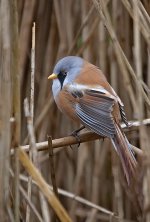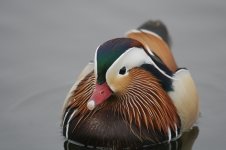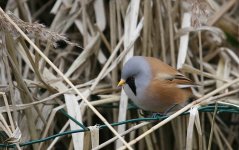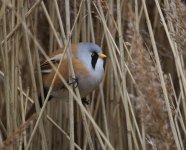Hi David - and others,
Sorry for a long message...
You may already have made up your mind for Canon based on very good advice from "Canon people" here. As much as I hate to admit, I think they are right - Canon is the strongest in areas that count most in bird photography: long-fl lens selection, focusing speed and handling of high-ISO noise. And they do have the upgrade path all the way to the uber-pro level.
However...

I would like to bring about a couple of points if photography involves significantly other areas than bird photography - and if you perhaps think that investing thousands for high-end ("L"-glass) long lens telephotography is expensive and/or limiting. I wouldn't want this choice to be left a generalized "no-brainer" for Canon.
Firstly, Keith's quotes from Dpreview could deserve some comments.
- I agree that Pentax should include a "sharp jpeg" setting for those who like it, but for those who know and use RAW - all the sharpness *is* there (as Dpreview mentions).
- "soft" K10D jpegs still have more detail than any 6Mpix jpegs, which already is entirely sufficient for A4 prints (which is pretty large).
- 10Mpix K10D RAW actually have more detail than the 8Mpix Canon 30D RAW-pics (and even 10Mpix Nikon D80)
- dynamic range of the K10 RAW is no worse than competitors'
- if you usually shoot jpeg, using RAW is made extremely easy in the K10D (a dedicated button for your left thumb)
Again I agree that in long fl telephoto the sensor-based image stabilization loses to good in-lens IS (maybe 1-2 stops?), but it is nevertheless useful - and you do get it to all your lenses without paying extra. And contrary to Canon's claims it is very useful also in low-light wide-angle photography.
Speaking of which - with Pentax you could get a weather-sealed 10Mpix body and a stabilized high-end "normal" zoom.
- 16-45/4 corresponding 24-67.5mm (1.5x crop) for less than 1300€
- 16-50/2.8 (weather sealed & ultrasonic motor) corresponding 24-75mm for 1700€ (?)
With Canon 30D & 1.6x crop
- 17-55mm (IS) corresponding 27.2-80mm for something like 2000€ (?)
- no weather sealing, and to get a good "landscape"-24mm (film-equivalent) stabilized wide-angle you have to buy another expensive lens.
OK, so to someone who wants to seriously become involved in bird photography, Canon is probably the best choice - but for many of us a DSLR system is largely/mainly for other uses. And as such Pentax offers as good or better quality for significantly lower price - and it actually works very well also in bird photography.
Best regards - and, honestly, no intentions to offend anyone!
Ilkka








